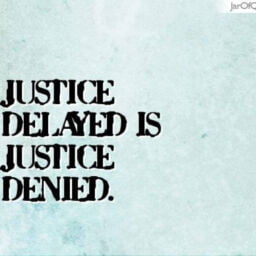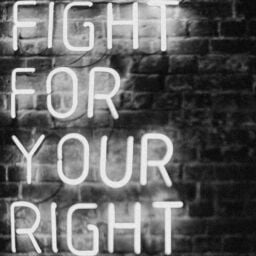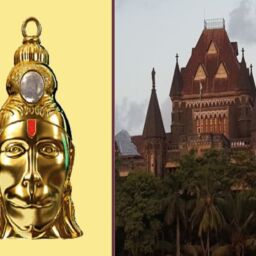Introduction
Fireworks, defined as devices containing explosive and combustible substances that create aesthetically pleasing effects and explosions when triggered by ignition, has been the bone of contention for India as a whole now. India, being the melting pot of cultures and traditions it is, there’s always an occasion to celebrate just around the corner and each such festival is accompanied by an assortment of ways of celebration. And while most of these ways of celebrating festivities have been harmless per se, some common ways like bursting firecrackers, employing loudspeakers, playing loud music, among others, have had various controversies attached to them. However, during this article, our point of focus would be the usage of firecrackers, the controversies surrounding the issue and the current stance of the Indian judiciary regarding the same.
Fireworks: History in India
The usage of firecrackers in India is not a new concept. Similar to gunpowder, they also seem to have a long history in India, dating back to around the 1400s. According to historical speculations, the first traditional firecrackers were brought from China to India by the Arabs. The earliest reported instances of such pyrotechnical shows in India can be dated back to 1443, where Abdur Razzaq, Timurid Sultan Shahrukh‘s ambassador to the court of the king of Vijayanagar, Devaraya II. He describes the events occurring in the course of celebrating the Mahanavami festival and the use of firecrackers during the same. Manufacturing formulas for fireworks describing pyrotechnic mixtures are found within Kautukachintamani, a Sanskrit volume by Gajapati Prataparudradeva (1497-1539), a reputed royal author from Orissa. A notable instance is that when Ibrahim Adil Shah, the Sultan of Bijapur, around 1609 AD, provided a sumptuous dowry for the wedding of his courtier’s daughter in addition to Rs. 80,000 solely being spent on fireworks. This has been mentioned in the famous volume, Medieval India: From the Sultanate to the Mughals written by late historian Satish Chandra.
As we approached the eighteenth century, fireworks had become the norm in the large-scale Diwali celebrations that rulers organized. The accounts of these events can be found in the Peshwayanchi Bakhar, a Maratha chronicle text. By the time the eighteenth century came to an end, the military use of gunpowder was replaced by new and more efficient explosives and thus one of its primary consumers became the fireworks industry.
In medieval times, firecracker celebrations were not only magnificent but also pricey, as can be made out by descriptions of those times. Hence, they were mostly employed by either rulers or financially well-off people. The first factory manufacturing fireworks in India was established in Kolkata during the 19th century. Further, after India achieved its independence from British Raj, Sivakasi in Tamil Nadu came up as the hub for firecrackers in India. Further, with India’s growing economic prosperity, overall growth in population and a thriving fireworks industry, the use of fireworks in India has become more than a mere celebration; a tradition.
The Firecracker Saga: A Chronology of Events
In the case of Forum, Prevention of Environmental and Sound Pollution v. Union of India and Anr.[1] The apex court had passed certain directions regarding the usage of firecrackers; First, it was directed that firecrackers should be assessed based on their chemical composition instead of their noise levels. Further, there shall be a complete ban on the usage of firecrackers from 10:00 p.m. to 6:00 a.m. The Court also directed the Department of Explosives (Hereinafter referred to as “DoE”) to carry out necessary research activity for the purpose and come out with the chemical formulae for each type or category or class of firecrackers. Furthermore, the DoE was also instructed to divide the firecrackers into two classes, namely, (i) Sound emitting firecrackers, and (ii) Colour/light emitting firecrackers and the manufacturers of firecrackers were directed to list down all the details in relation to the chemical composition of the firecrackers on the packaging of the same and that the chemical composition should comply with the requirements laid down by the DoE.
In Arjun Gopal v. Union of India[2] wherein the parents of three infants aged between six to fourteen months had filed a Public Interest Litigation in the Supreme Court, the Court observed that the air quality in Delhi has deteriorated drastically and the air quality standards range from ‘poor’ to ‘severe’ during the winters, which further leads to the potential of diseases. The directions thus issued in the decision were:
- Suspend all such licenses as permit sale of fireworks, wholesale and retail, within the territory of NCR.
- The suspension shall remain in force till further orders of this Court.
- No such licenses shall be granted or renewed till further orders.
However. These directions were further modified in the Orders passed in the following cases. In Arjun Gopal v. Union of India[3], the Court noted that commercial or any other interest cannot be prioritized over the health and well-being of people, graded regulation of firecrackers was necessary which would eventually result in prohibition. In furtherance of the same, directions were given so as to restrict temporary licenses to 50%, pending further consideration. Further, in Arjun Gopal v. Union of India[4], the apex court banned certain categories of fireworks including those containing Sodium salts and further instructed monitoring of the remaining classes of fireworks in addition to instructing that use of firecrackers will be permitted only from 8:00 p.m. to 10:00 p.m. during the Diwali festival and other timings for other festivals. However, firecrackers were not banned totally and manufacturing and use of ‘green firecrackers’ i.e., firecrackers that produce fewer emissions as compared to traditional firecrackers was permitted.
In December 2020, the National Green Tribunal (Hereinafter referred to as “NGT”) ordered a blanket ban against the sale and usage of all types of firecrackers in the National Capital Region (Hereinafter referred to as “NCR”) and all other cities/towns of India where the average ambient air quality for November (as per available data from the previous year) fell under ‘poor’ and above category. This ban was to begin from midnight of November 9-10, 2020 and last till November 30-1 December 2020 after which it was to be reviewed. In cities and towns where the air quality was ‘moderate’ and below, only green crackers were permitted for sale and usage of the same was permitted only for two hours during festivities like Diwali, Christmas, New Year, etc. as may be specified by the concerned State. At other places, such bans and restrictions were optional for the authorities, but if stricter measures prevailed, the same must be applied. In July 2021, firecracker manufacturers and sellers moved the Supreme Court against the ban that was imposed by the NGT but it was upheld by the apex court.
Conclusion
Festivities and celebrations are a part of every culture and tradition and the same cannot be parted away with. But at the same time, one must pay heed to the problems that can be caused by our enjoyment. But every coin has two sides. While totally banning crackers can push thousands to the verge of unemployment, permitting the sale and usage of harmful firecrackers can lead to harmful and detrimental health problems among the masses. The Supreme Court’s attempt at striking a balance between the two sides is a commendable approach and the need of the hour.
Author(s) Name: Rohitkumar Rout (Chanakya National Law University, Patna)
References:
[1] (2005) 5 SCC 733.
[2] (2017) 1 SCC 412.
[3] (2017) 16 SCC 280.
[4] (2019) 13 SCC 523.
















